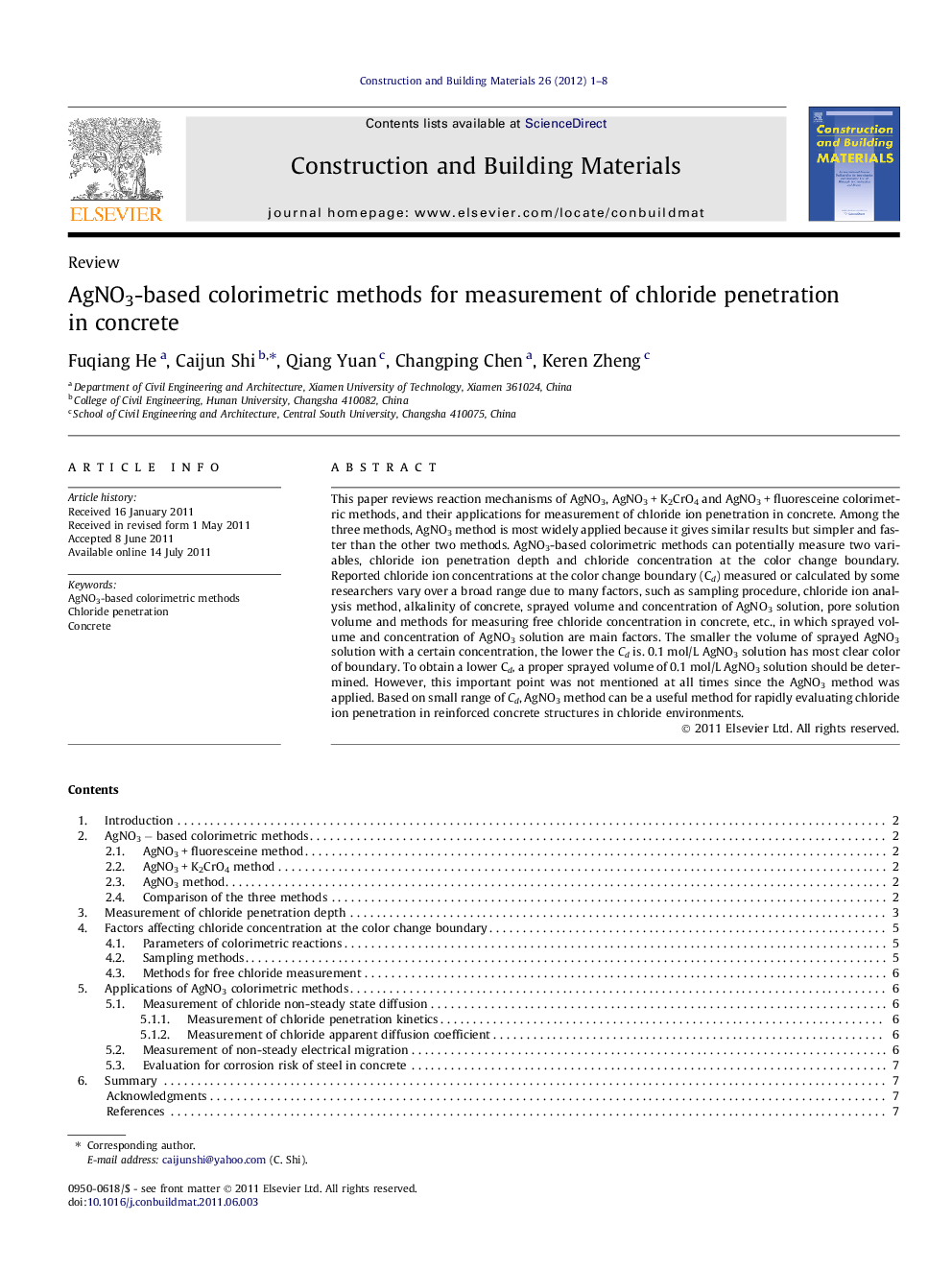| Article ID | Journal | Published Year | Pages | File Type |
|---|---|---|---|---|
| 259123 | Construction and Building Materials | 2012 | 8 Pages |
This paper reviews reaction mechanisms of AgNO3, AgNO3 + K2CrO4 and AgNO3 + fluoresceine colorimetric methods, and their applications for measurement of chloride ion penetration in concrete. Among the three methods, AgNO3 method is most widely applied because it gives similar results but simpler and faster than the other two methods. AgNO3-based colorimetric methods can potentially measure two variables, chloride ion penetration depth and chloride concentration at the color change boundary. Reported chloride ion concentrations at the color change boundary (Cd) measured or calculated by some researchers vary over a broad range due to many factors, such as sampling procedure, chloride ion analysis method, alkalinity of concrete, sprayed volume and concentration of AgNO3 solution, pore solution volume and methods for measuring free chloride concentration in concrete, etc., in which sprayed volume and concentration of AgNO3 solution are main factors. The smaller the volume of sprayed AgNO3 solution with a certain concentration, the lower the Cd is. 0.1 mol/L AgNO3 solution has most clear color of boundary. To obtain a lower Cd, a proper sprayed volume of 0.1 mol/L AgNO3 solution should be determined. However, this important point was not mentioned at all times since the AgNO3 method was applied. Based on small range of Cd, AgNO3 method can be a useful method for rapidly evaluating chloride ion penetration in reinforced concrete structures in chloride environments.
► Colorimetric methods for measurement of chloride penetration. ► Factors affecting chloride concentration at the color change boundary. ► Methods for free chloride measurement. ► Measurement of chloride penetration depth. ► Applications measurement of AgNO3colorimetric methods.
